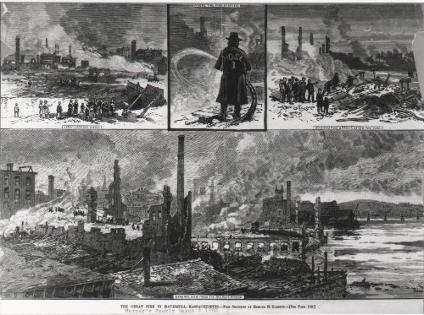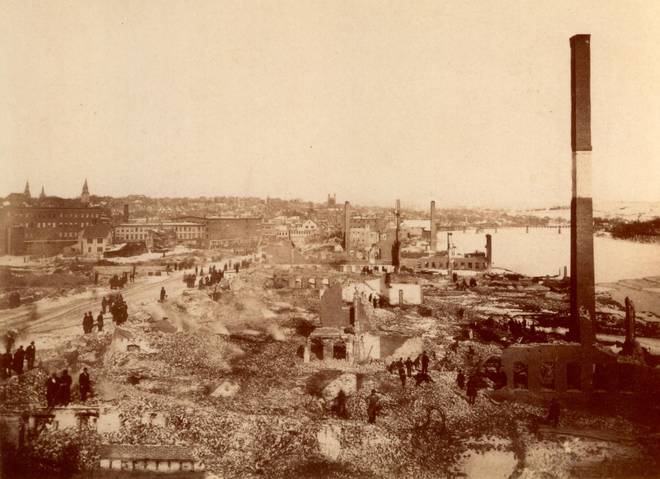
Haverhill's Great Conflagration of 1882

Conditions at the Time of the Fire
According to Chief West, the fire department was not well organized then. It had no modern fire apparatus with which to fight a fire of any magnitude. There were no permanent firemen. Citizens and call firemen alike heeded the call of fire. The only permanent men employed were the drivers of the three steam engines then in use. The drivers were often involved in other lines of work for the city. At the time of the fire, one of Haverhill’s steam fire engines was at the Amoskeag Fire Engine Works in Manchester,
Days before the fire, Chief West inspected the factories that were later destroyed by the fire, including the one in which the fire is believed to have started.
The chief had brought to the attention of building owners and shoe manufacturers alike a hazardous condition where wooden doors swung back against heated stoves. He ordered that the wooden doors be covered with tin. Instead of correcting the hazardous condition, the owners instead elected to increase the insurance on their property. A few days before the fire, Chief West appeared before the City Council to request additional fire apparatus and that the job of steam engine driver be made full time so the driver could remain at the firehouse. Since the total fire loss the year before had been only sixteen hundred dollars, council members were not receptive to his request. In those days there was no fire alarm system that would indicate a fire or its location. Instead, the old village method of alarm was often used. Citizens yelling "fire" and the ringing of church bells or a local whistle was common. The home of Chief West was at
The fire was discovered at
At Elm Corner he met a man who informed him that there had been a fire earlier, in a pharmacy, on Mt. Washington, but it had been extinguished. It wasn't until he proceeded to Eaton’s Corner and looked along
At
Note: Mrs. Harriet Treab was the wife of George C. Treab, Haverhill’s sixth fire chief who served in 1867. The Treab's daughter, Mary Amanda, married Mr. West on
Note: During the mid-1800's shoes were being manufactured in small Haverhill factories. In spite of the conflagration that nearly completely destroyed this small cottage shoe industry in 1882, by the 1890's, Haverhill's shoe production both quantity and quality had earned it the nickname the "Queen Slipper City" of the world.
